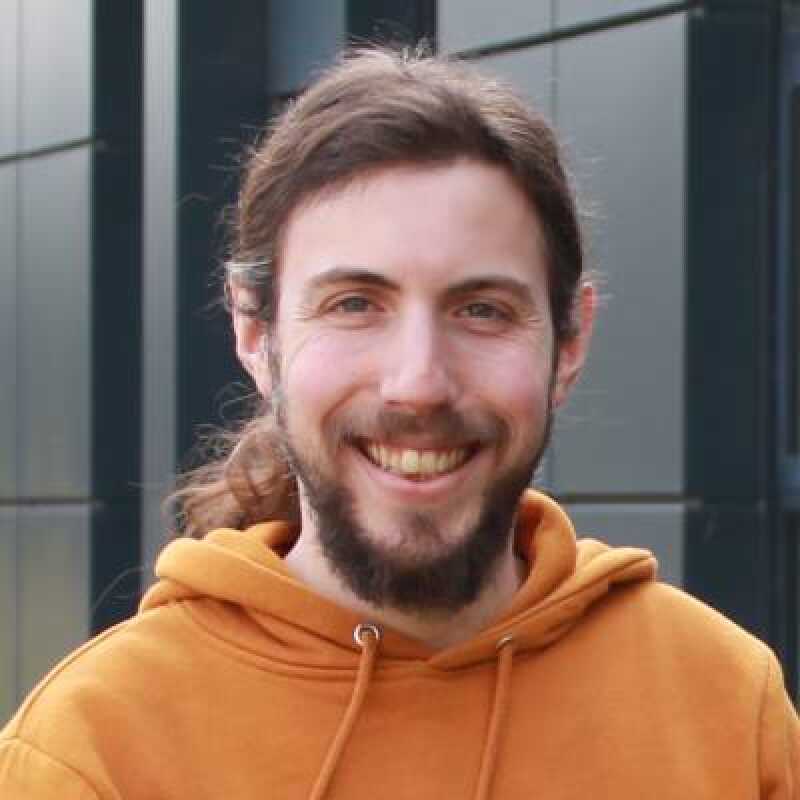- University of Kent
- Physics and Astronomy
- People
- Dr Manuel Marques
Dr Manuel Marques


Dr Manuel Marques is a Lecturer in the School of Physics and Astronomy and a member of the Applied Optics Group, where he develops imaging techniques for applications in non-destructive imaging and sensing, with particular emphasis on optical coherence tomography.
Manuel completed his MSc (integrated Masters programme) in Physical Engineering at Faculdade de Ciências da Universidade do Porto, Portugal in 2012. He then continued his studies at the University of Kent, gaining a PhD in Physics in 2016; his thesis, completed under the supervision of Professor Adrian Podoleanu, is titled 'Spectrometer-based Optical Coherence Tomography Systems with Extended Functionality'.
After a period working as a post-doctoral researcher in several projects in the Applied Optics Group, since 2022 Manuel is now a lecturer in the School of Physics and Astronomy, continuing to carry out Applied Optics research as part of the Applied Optics Group.
Manuel’s past research projects all involve the development of minimally invasive diagnostic imaging tools, mostly for biomedical applications. More recently, Manuel has worked in translating these tools to other, non-biomedical, fields, such as forensic science, agricultural sciences, pharmacy, and planetary sciences.
During his past role as a post-doctoral researcher, Manuel worked in several externally funded projects:
• VIPER, ‘Sensored Micro-Surgical Robot for Safe Regenerative Retinal Therapy Devices’, as part of a consortium with King’s College London, Imperial College London and Moorfields Eye Hospital, funded by the National Institute of Health Research, with the aim of developing endoscopic retinal sensing and imaging devices.
• 5DHiResE, ‘5-Dimensional High-Resolution non-invasive assessment of mammalian Embryos’, a collaboration with Prof Darren Griffin’s group at the School of Biosciences, University of Kent, funded by a major BBSRC grant. This project involves developing novel OCT imaging devices and probes to assess the viability of in-vitro produced mammalian embryos.
• REBOT, 'Robotic EndoBronchial Optical Tomography', was a collaboration with the Hamlyn Robotics Centre, Imperial College London, which was funded by a major EPSRC grant. It involved developing novel optical solutions for imaging and ranging to be integrated in medical robots within bronchial surgical scenarios. These minimise the invasiveness of lung surgeries, yielding several advantages.
• AMEFOCT project ('Add-on Module for Optical Coherence Tomography with En-face View Option'), which involved developing a proof-of-concept system based upon Master-Slave Interferometry, a technology developed at the Applied Optics Group.
Academic year 2022-23:
PHYS0027 (Introductory Physics Laboratory and Communication Skills),
PHYS3120 (Mathematics II),
PHYS5300 (Physics Group Project),
PHYS6020 (Physics Problem Solving).
Education:
October 2012 — August 2016
PhD in Physics (School of Physics and Astronomy, University of Kent — Canterbury, United Kingdom);September 2007 — September 2012
MSc (integrated Masters programme) in Physical Engineering (Faculdade de Ciências da Universidade do Porto, Portugal);
Loading publications...
Showing of total publications in the Kent Academic Repository. View all publications